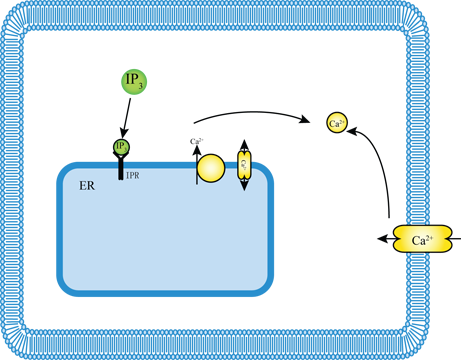Sneyd, Wetton, Charles, Sanderson, 1995
Model Status
This CellML model is the model which was used to produce the original results in the paper. The units have been checked and are consistent and this model is known to be valid CellML.
Model Structure
ABSTRACT: In response to mechanical stimulation of a single cell, airway epithelial cells in culture exhibit a wave of increased intracellular free Ca2+ concentration that spreads from cell to cell over a limited distance through the culture. We present a detailed analysis of the intercellular wave in a two-dimensional sheet of cells. The model is based on the hypothesis that the wave is the result of diffusion of inositol trisphosphate (IP3) from the stimulated cell. The two-dimensional model agrees well with experimental data and makes the following quantitative predictions: as the distance from the stimulated cells increases, 1) the intercellular delay increases exponentially, 2) the intracellular wave speed decreases exponentially, and 3) the arrival time increases exponentially. Furthermore, 4) a proportion of the cells at the periphery of the response will exhibit waves of decreased amplitude, 5) the intercellular membrane permeability to IP3 must be approximately 2 microns/s or greater, and 6) the ratio of the maximum concentration of IP3 in the stimulated cell to the Km of the IP3 receptor (with respect to IP3) must be approximately 300 or greater. These predictions constitute a rigorous test of the hypothesis that the intercellular Ca2+ waves are mediated by IP3 diffusion.
The original paper is cited below:
Intercellular calcium waves mediated by diffusion of inositol trisphosphate: a two-dimensional model. J. Sneyd, B.T. Wetton, A.C. Charles and M.J. Sanderson, 1995, American Journal of Physiology, 268, C1537-C1545. PubMed ID: 7611375
 |
| A schematic diagram of the pathway described by the mathematical model. |

